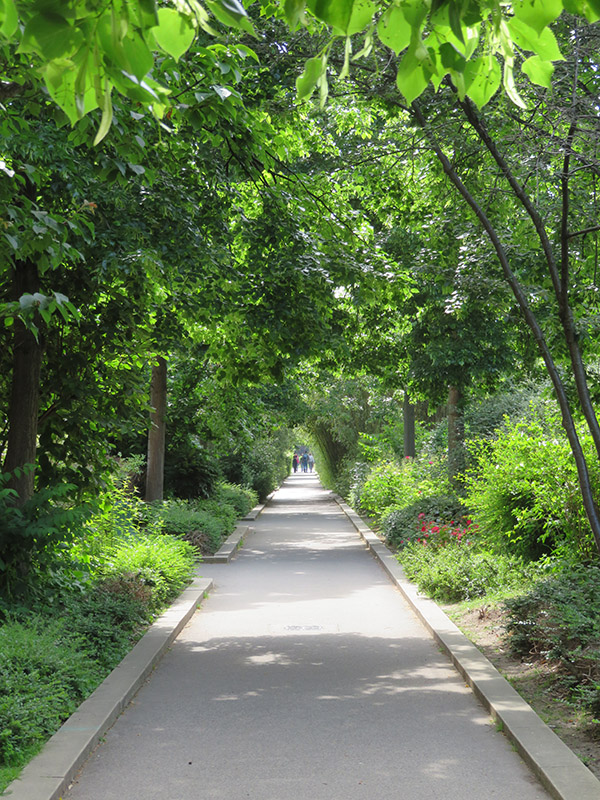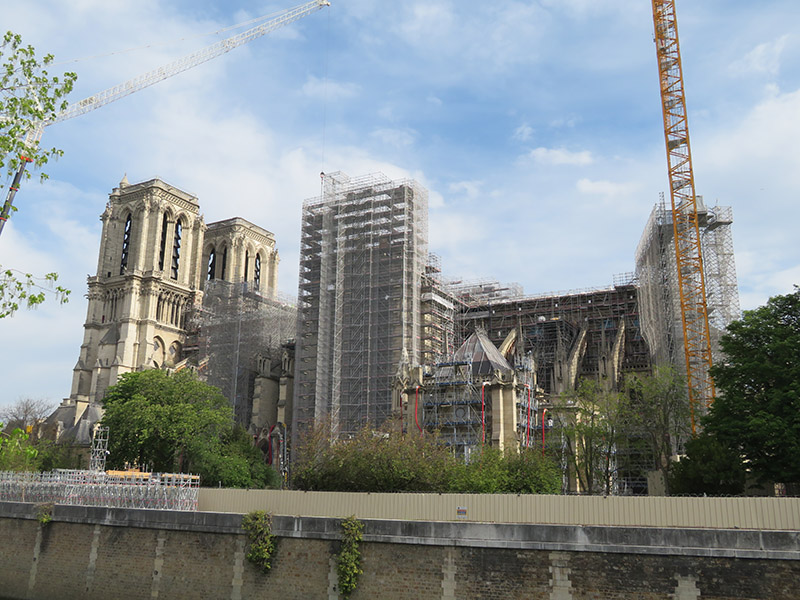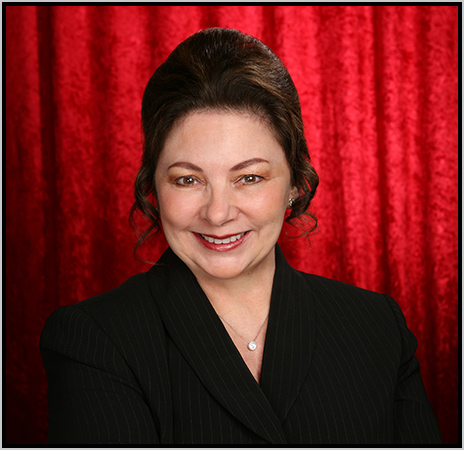We woke really early on Thursday May 4th, our bodies still adjusting to the new time and place. A little after 7:00 we went downstairs and walked two blocks to a chosen patisserie. We got two croissants de amandes (almond croissants), but the owner’s coffee bean delivery was late, so we took our pastries and walked to another café for coffee and ate at their sidewalk table. We sat watching the nearby square’s day begin with its corner café putting out their tables and chairs, and in front of that restaurant, local sellers were preparing their tables for a flea and antique market.
When we finished eating, we were one of the first to walk around their tables looking over the old and odd items. Vere smiled at seeing old issues of Tintin, a children’s comic book that he knew from when he lived in Paris as a child. I saw an old Persian brass incense holder and a Roman oil lamp. Lots of books were there to view and piles of old clothing filled long tables, but we made no purchases.
 The best thing to do in Paris is walk. We ambled down the Avenue Daumesnil, angled off toward the Canal Saint Martin, and enjoyed a stroll down the garden path that goes along the canal. It was filled with rose growing vines over many arches and beds of spring flowers. It was really nice to be out walking even earlier than most French were walking their dogs.
The best thing to do in Paris is walk. We ambled down the Avenue Daumesnil, angled off toward the Canal Saint Martin, and enjoyed a stroll down the garden path that goes along the canal. It was filled with rose growing vines over many arches and beds of spring flowers. It was really nice to be out walking even earlier than most French were walking their dogs.
At the bridge where the canal ends and a channel runs into the Seine River, we saw a film team on a break, lowering their reflectors and cleaning their cameras. We crossed under the bridge where there was a lock that allowed small boats to get back and forth from the river to the canal. Then we crossed the Pont d’Austerlitz (bridge) and walked along the Seine, coming out next to the Botanical Gardens. We thought we might cut through the botanical gardens, but they were not open for another thirty-five minutes.
Instead, we decided to walk along the tree-lined Qauai de la Tourmile on the left bank of the Seine. It was along this side of the river where many bouquinistes (booksellers) have their stands. The last time we were in Paris, we had made friends with one of them, and we hoped to find our friend Jean-Marc at his stand, but all the stands were closed. After doing a search on our phones, we were reminded that most do not open until 11:00 a.m. and it was still too early. This USESCO world heritage site, which stretches three kilometers offering 240 owners selling from 900 “green boxes” old magazines and antiquarian books, has been an institution since the sixteenth century. At one time it was censored and closed by complaining bookstores, but began again in 1762 and then fully permitted in 1859. The Seine is described as “the only river in the world that runs between two bookshelves.”
We kept on walking along the left bank of the Seine, until we stood across from the Notre-Dame Cathedral on the Île de la Cité. After the fire that severely burned the cathedral in April of 2019, work began for its rebuilding. We stood in awe at the momentous work that was occurring. So much scaffolding covered the huge building that aside from the cathedral’s entrance with its two tall towers which thankfully had escaped the fire, little of the newer walls of the long building could actually be seen. Building materials were continually being raised to different areas by huge cranes and men like ants moved and worked on all different levels. It is expected to reopen at the end of 2024.
From there we turned left into the Latin Quarter of the 5th Arrondissement. While walking Paris in the past and now again, Vere liked to always familiarize himself with the city’s history, and there are plaques all around Paris that note particular deaths and aspects that affected it during the Second World War. We recall our American history lessons about how General Patton was set to beat back the Nazi forces in Paris, but it wasn’t him that finally got the Germans in Paris to surrender. General De Gaule raced to save Paris to keep the Nazis from destroying the city, which Hitler claimed they would do. De Gaule arrived the night before, surprising the Germans, and it was that night that Hitler’s General Dietrich Hugo Hermann von Choltitz, disobeyed Hitler’s orders to destroy the city. Instead, he surrendered to the provisional government, called the Free French forces. Patton did not arrive until the next day, parading along the streets, but the surrender had already occurred.
When we arrived at the Latin Quarter, it was still only 11:00 a.m. We had originally thought we might find some lunch there later, but we were so hungry by then, after walking several miles, we decided instead to go into a creperie for something to eat. We had instead the traditional buckwheat galettes. These stronger tasting pancakes, though still crepe thin, are not sweet but savory. Vere had cheese, ham, and some black truffle, which was called the Beyoncé, and I had a cheese, onion, tomato, and black truffle called the Josephene Baker. They were filling, but the buckwheat flavor was so strong it almost out-flavored the truffles, which is hard to do. We thought about ordering a sweet crepe afterward, but by then we were full, and would have plenty of opportunity at a later time in our travels for sweet crepes.
By the time we finished and got back up, our legs were stiff and we were ready for a rest, so we got an Uber and went back to our Airbnb. So far, the weather had held out and no rain had come, so we did some reorganizing of what we wanted to do and see over the next few days.
For dinner, we decided on a place close by, the Jardin de I’Arrosoir, a brasserie (brewery) and café. At a little after 7:00, we went to eat. At first, we wanted to sit outside, but then my nose started to twitch from the smell of cigarettes, letting me know my allergy to tobacco was kicking in, so we moved indoors. Also, it cut down on the traffic noise and smells. There were very few people indoors and we got a good table at a large window. I had a salad with warm goat cheese and honey on toast with a mango nectar to drink, and Vere had the Entrecôte steak with Béarnaise sauce. Both were very good.
 For our evening stroll, we opted to walk the Promenade Plantée, a planted promenade. It was originally an old, elevated rail line, which was built in 1859 but was abandoned in 1969. In 1988, the tracks were removed and planted with garden plants and trees, becoming the world’s first elevated park. This green space goes through the 12th arrondissement. The entire converted length runs about three miles long, from Bois de Vincennes to the Opéra Bastille, going underground, above ground and through tunnels. The elevated portion is only about one mile long, between the Opéra and the Jardin de Reuilly, which is where we walked, as that was our neighborhood. There are entrances all along its length with stairs and elevators to the higher areas. We’ve walked it on prior trips and enjoyed the peaceful and attractive area above the traffic level. The gardens are fully grown, in places with metal archways covered with vines, leafy trees, and flower beds along the way. After walking for a while, we descended the walkway and stopped at an alimentaire (food store) for a few groceries, then went back to our Airbnb.
For our evening stroll, we opted to walk the Promenade Plantée, a planted promenade. It was originally an old, elevated rail line, which was built in 1859 but was abandoned in 1969. In 1988, the tracks were removed and planted with garden plants and trees, becoming the world’s first elevated park. This green space goes through the 12th arrondissement. The entire converted length runs about three miles long, from Bois de Vincennes to the Opéra Bastille, going underground, above ground and through tunnels. The elevated portion is only about one mile long, between the Opéra and the Jardin de Reuilly, which is where we walked, as that was our neighborhood. There are entrances all along its length with stairs and elevators to the higher areas. We’ve walked it on prior trips and enjoyed the peaceful and attractive area above the traffic level. The gardens are fully grown, in places with metal archways covered with vines, leafy trees, and flower beds along the way. After walking for a while, we descended the walkway and stopped at an alimentaire (food store) for a few groceries, then went back to our Airbnb.

 The official website of Lita-Luise Chappell, writer on sex, magic, food, distant lands, and everyday life with articles, poetry, novels, travelogues, rituals, cookbooks, and short-stories.
The official website of Lita-Luise Chappell, writer on sex, magic, food, distant lands, and everyday life with articles, poetry, novels, travelogues, rituals, cookbooks, and short-stories.
